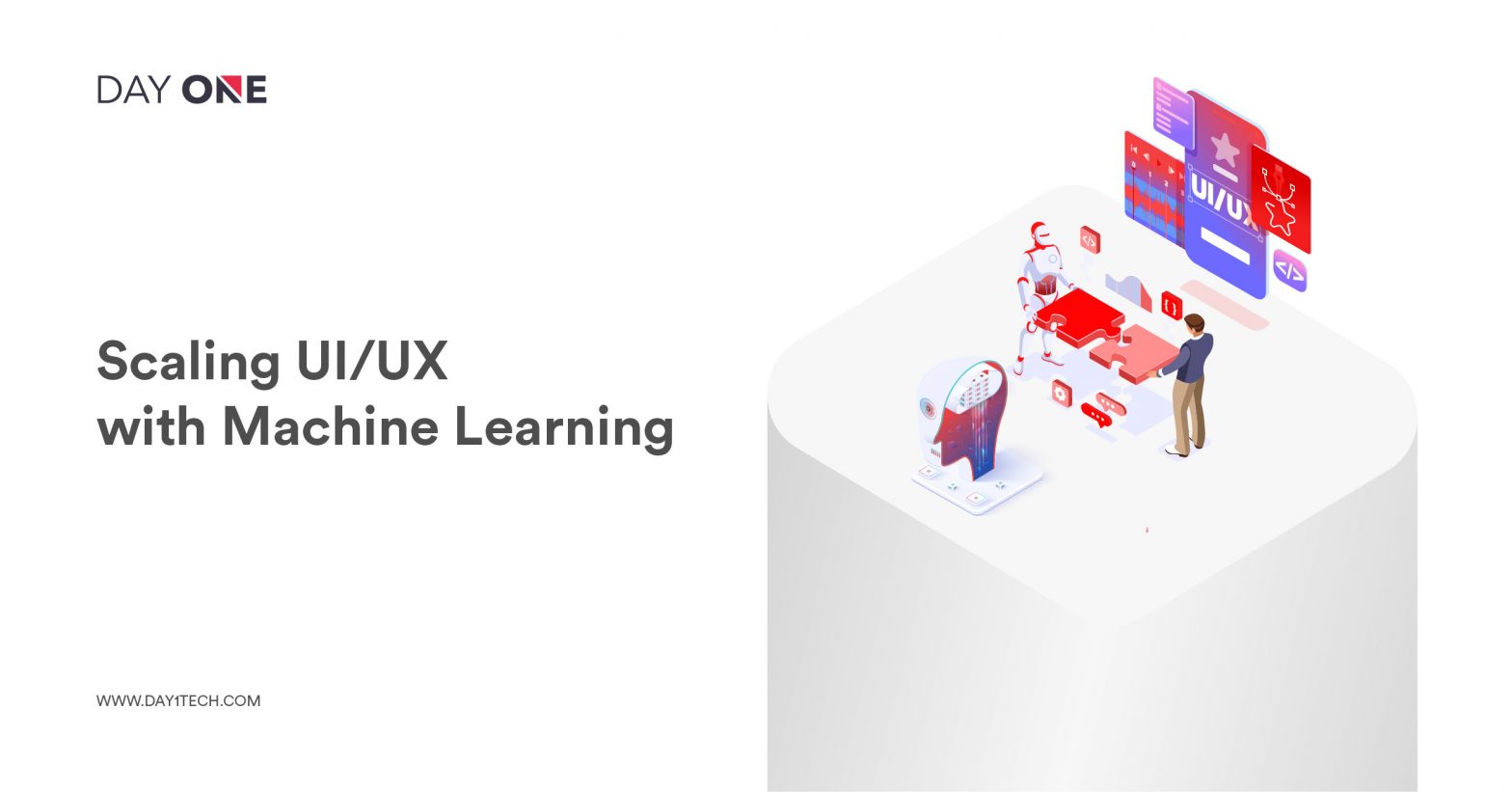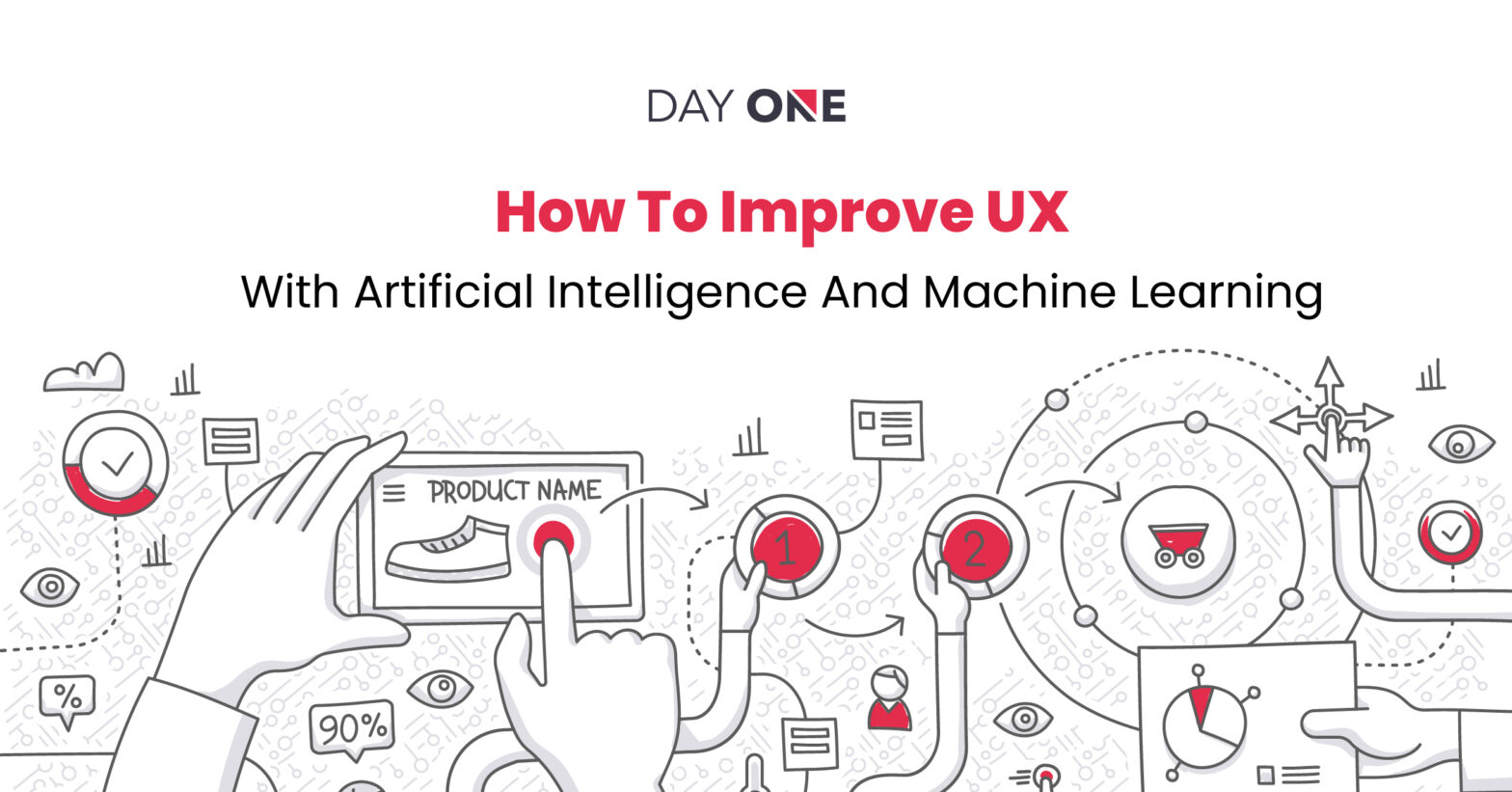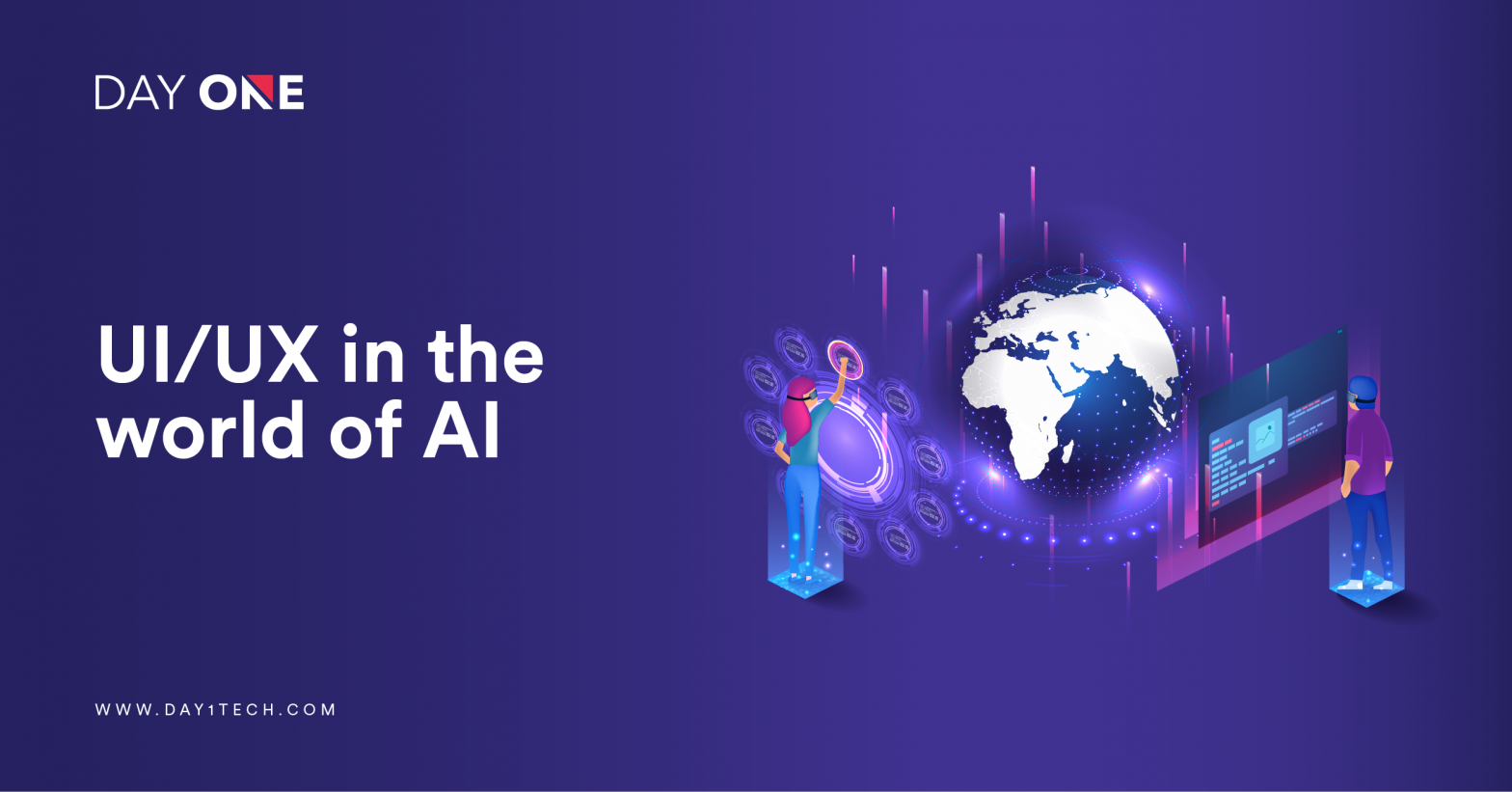Scaling UI/UX Design with ML algorithms
admin
UI/UX
June 3, 2021
5 min read

This is the era of Artificial Intelligence and we are very fortunate to be living in it. There is hardly any aspect of life today that AI technology has not impacted in a powerful way and the influence just gets deeper by the day. Even in business, with smartphones and dashboards ruling the day, the tables have turned. Today, it is all about the user and how brands can keep the user engaged. Artificial Intelligence and Machine Learning UI/UX designs as such is not just a technological need for brands today, it is the survival toolkit.
What we will look into here is how brands are using Machine Learning technology to design better products and offer improved user experiences. From mobile apps to wearables to web apps, it’s all about user interaction and engagement today. It’s a competitive market we are thriving in, and brands are leaving no stones unturned for earning a permanent place in their customer’s smart devices. The question of “How” as such has experienced a prominent paradigm shift with brands exploring and experimenting with new tech like AI to find smarter, sleeker and refined solutions to UI/UX challenges.
Understanding UX: What is User Experience?
UX Designing is an art and science in itself. It is the experience an end user has when interacting with a company’s products and services from the beginning to the end. It encompasses the user’s experience throughout the journey, from the first point of contact to the ease of use, navigation, and even checkout.
The best UI/UX designing companies understand that the UI/UX design process begins by understanding the customer, doing market research, and mapping the product and design framework, so as to drive action through designs. Today the trend is more towards building human-centric UI/UX designs that are interactive, engaging and built to drive human action.
For example, next time you use a mobile application, don’t forget to notice where the CTAs are placed.
How Machine Learning can be used for better UX?
Human centric UX designs play a key role in distinguishing brands from their competitors. The often invisible USP for brands, it can change the entire dynamics of user interaction and loyalty. Businesses understand this and hence pay closer attention to keeping the design elements intact.
With AI/ML integration into designing, the bars have been raised. Using AI technology for personalizing consumer experiences has become the norm of the day, with more businesses integrating AI into their products and process. Complemented by data analyzed through Machine Learning algorithms, brands are now better equipped to take the UI/UX personalized experience to the next level.
Emotion AI
This is innovation in the true sense of the term. AI robots (software robots) are being developed that would be capable of analyzing and recognizing emotions of people. This technology involves:
- Data analysis
- Machine learning algorithms
- Facial recognition software
The technologies will collectively be at play and analyze a person’s reaction to a website/ ad/ design and provide insights into what works better for engagement. Businesses can leverage machine learning with UI and understand which design is more engaging for customers and design products accordingly. The technology, it is believed, will not only benefit design but will also come in handy for judging the response to content/ads and help to refine marketing strategies around them.
Choice Architecture
Choice architecture is the design of different ways choices can be presented to the consumer and how the presentation of those choices impacts decision making of consumers. When customers are presented with a plethora of options, it leaves them confused. Oftentimes, this can prove costly to e-commerce retailers. According to a study conducted by Baymard Institute, the average cart abandonment rate is 68.63%. ML-driven UX can make the presentation of choices more personalized, making it easier for customers to make a choice.
North Face, an American apparel brand has utilized machine learning algorithms effectively. Collaborating with IBM Watson, they launched their mobile app where customers could interact with Watson.The customers could tell Watson about the purpose of buying the jacket, their style preferences, and by applying ML algorithms Watson could provide the users with a number of options according to their preferences.
Their numbers define their success story. After two months and 50,000 users, there was a 60% clickthrough rate. To top that, there was 75% total sales conversions. 3 out of 4 people mentioned they would use it again.
Chatbots
One of the most prominent and business relevant uses of AI and machine learning has been in the development of chatbots. According to Outgrow, 80% of businesses are going to be integrating a form of chatbots by 2020 into their business processes. Nowadays, almost every brand includes a chatbot service and customer support is smartly being taken over by chatbots completely.
And for brands to leverage this, the most important part is building the right chatbot experience for users. Chatbots are transforming EdTech, Fintech, HealthTech and several other industries with more businesses adding it to their profile. Chatbots ideally use a combination of machine learning algorithms and NLP technology to understand human language, interpret them, search the database and provide an answer.
From the perspective of UI/UX this exchange of customer interactions is where ML helps. Machine Learning tools can help to detect any similarity between interactions the machine and user makes in terms of queries, devices being used, session length, etc. Based on the insight and the data fed in, design elements can be updated and adjusted to suit customer needs.
Recommendations and Suggestions
Amazon, Spotify and Netflix are brands most are familiar with. When it comes to engaging the user, it is impressive how they have aced the game even in the face of competition. Of course, a lot of the credit for their success goes to their AI based recommendation systems for streaming but it is also their absolutely brilliant, technically sound and easy to handle user interface that adds to an enthralling user experience.
Whether it is for recommending a product, a T.V. show, a music genre or any other, Machine Learning algorithms in UX designing play a pivotal role. While data and insights help the recommendation system to suggest, the UI/UX design elements are arranged to offer personalized suggestions at best.
Let us consider the example of Spotify. Spotify uses machine learning algorithms to track engagement data for different songs, playlists, and artists. Once this data is gathered from the user, it is stored, analyzed and filtered. With the help of machine learning algorithms, patterns are identified between similar audiences, similar content and closely associated products.Then recommendations are made according to the taste, preferences and activities of the user. When you see the recommendations under Uniquely yours, Made for you, Your heavy rotation, Based on your recent listening, on Spotify, it is machine learning algorithms that are working behind the scenes to make sure you remain on Spotify for as long as possible and are always delighted as you have your music sorted and playlists exclusively designed for you from the large library of songs they have. This service alone has contributed to the likes of Netflix, Amazon and Spotify.
Future of Machine Learning in UI/UX designing
The importance of data design cannot be ignored or sidelined. For instance, if more users are interacting with a brand through their mobile devices, apps or website, the designing element should include more catchy images and easy-to-click icons for engagement (considering typing is not convenient). Brands have realized how close the two are linked and are gradually looking at them not as separate entities but a part of the whole. AI in UX Design as such has just started a new chapter in their journey, and we can expect only better news in the future.
As a top AI development company we believe that the demand for AI solutions and service will be on the rise in the years to come. There will be more advanced ML models providing better user experiences for consumers as well as businesses, leading to wider adoption even in designing intelligent user interfaces.
Explore More Blogs
Testimonials What customers have to talk about us
Finch (previously Trio) – Growth with Investing, with benefits of Checking
Reading Time: < 1 minThe Finch (previously Trio), one of our clients today has reached this level with our expertise and with a great team of developers in Day One, who have made every stone unturned in making this project a big success.
Neel Ganu Founder
USA
Vere360 – VR based Immersive Learning
Reading Time: < 1 minDay One helped Vere360 “fill skill gaps” and build a platform that would cater to their niche and diverse audience while seamlessly integrate the best of #AI and #VR technology.
Ms. Adila Sayyed Co-Founder
Singapore
1TAM – Video Blogging Reimagined
Reading Time: < 1 min‘1TAM’ was only for iOS with gesture-based controls, advanced video compression techniques, and a simple architecture that allowed actions to be completed in 2-3 taps. The real challenge for ‘1TAM’ was to keep it distinct which bought brilliant results with all the strategies and approaches implied for best video compression techniques.
Anwar Nusseibeh Founder
UAE
Fit For Work – The Science of Workplace Ergonomics
Reading Time: < 1 minDay One Technologies came with the expertise that was required and helped in building a platform that is edgy, functional, and smart, delivering engagement and conversions at every step.
Ms. Georgina Hannigan Founder
Singapore
SOS Method Meditation for ‘Busy Minds’
Reading Time: < 1 minDay One Technologies helped in building an innovative mobile app (for #iOS and #Android) that’s easy-to-use, engaging, and data-driven to help users reap the most at every point.





